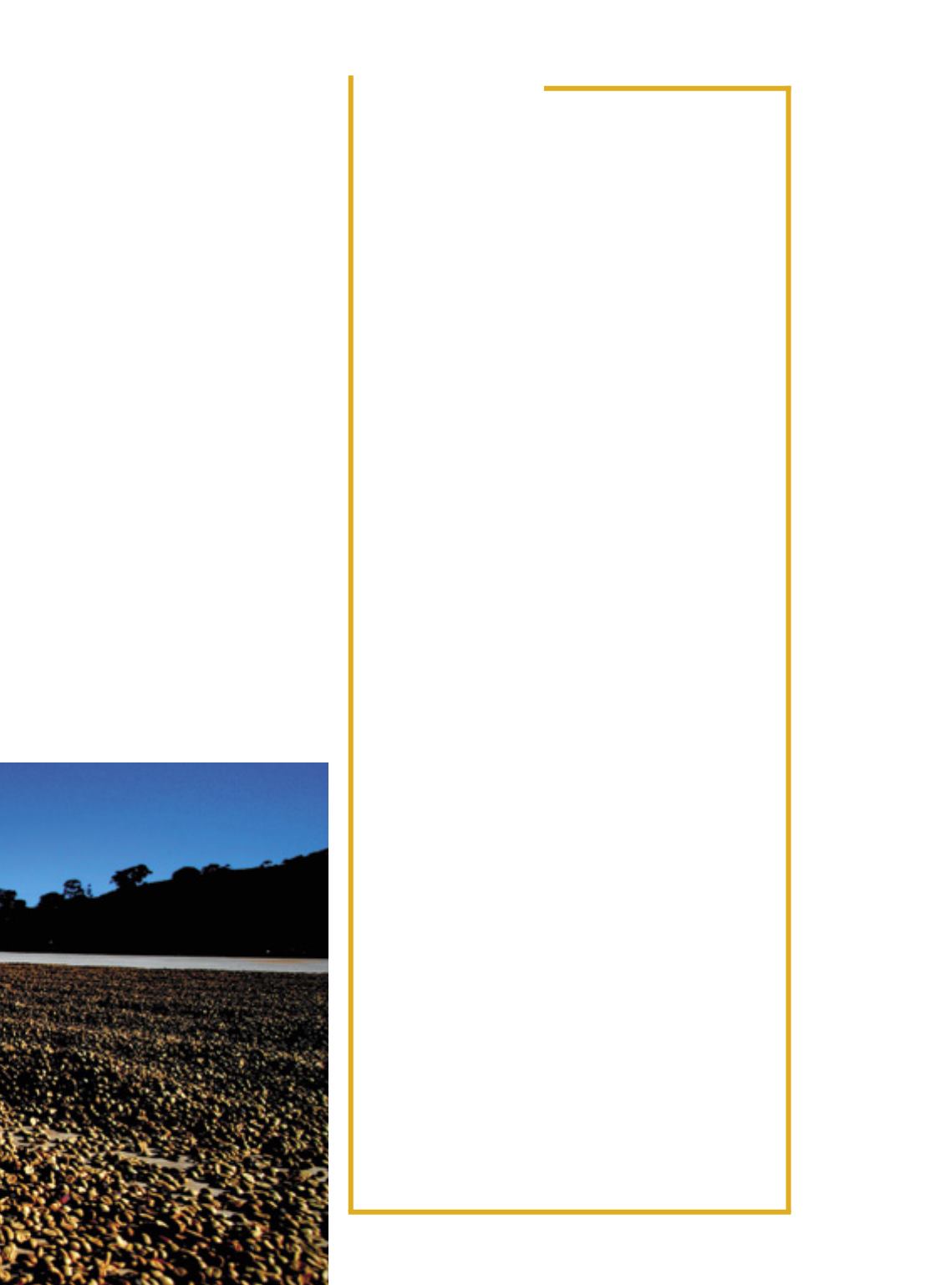
l
OSCILLATING
Year 2017 was marked by strong and uninterrupted declines in Arabi-
caandconilon(robusta)coffeeprices.Thiswastheconclusionreachedby
researchers from the Center for Applied Studies on Advanced Economics
(Cepea), of the Luiz de Queiroz College of Agriculture (Esalq), a division of
theUniversityofSãoPaulo(USP).Arabicacoffeepriceswereinfluencedby
falling international prices, over the first months of the year. In themean-
time, in the second half of the year, the reasonable stocks in the consum-
ing countries and the positive expectation regarding the coming national
crop had an influence on the lowprices of Arabica coffee in the domestic
and foreign scenarios. Themonthly average, R$ 514.23 per sack of Arabi-
catype6,wasfetchedinJanuary,andthelowest,R$445.95,inOctober.
Robusta prices continued high because the coffee roasting compa-
nies needed the grain for the compositionof their blends, but soonbe-
gan to drop because the supply of this variety soared considerably in
the domestic scenario and because of the projections for a huge crop
in the 2018/19 growing season in Brazil, not to mention the abundant
crop in Vietnam in the 2017/18 crop year. A sack of type 7 robusta start-
ed in 2017 with the highest average price in January, R$ 495.20, and
ended with the lowest in December, R$ 362.31. According to an analy-
sis by the Cepea, with prices falling sharply, the coffee farmers became
less aggressive in2017, decreasing their rhythmof businesses. Further-
more,withcomfortablestocks,agreatpartofthecountriesthatimport
the bean fromBrazil reduced their purchases.
Brazilian coffee exports equally shrank in 2017. Shipments
amounted to30.790millionsacks, down10.1percent fromthe34.268
million sacks shipped in 2016, according to the report by the Brazil-
ian Coffee Exporters Council (CECafé). Revenue from coffee amount-
ed to US$ 5.2 billion in 2017, against US$ 5.4 billion in the previous
year. The average price remained at US$ 169.36 per sack, up 6.6 per-
cent from2016. The revenue pushed the product to the fifth position
in the total shipments of Brazilian agribusiness, representing a share
of 5.4 percent. Cecafé president Nelson Carvalhaes explains that the
market had anticipated this result for 2017, due to the adverse influ-
ence coming fromtheweather conditions over the past years. “An ex-
ample was the sharp decline in conilon exports”, he recalls.
For 2018, recovery should start in the second half of the year, when
the new crop reaches the market. “There is every indication that, as of
July,wewillhaveagoodcrop,favoredbythenewplantings,appropriate
culturalpracticesandbythetimelyrainfallsthathavereachedthecoffee
farming region up to the moment”, says Carvalhaes. The ending stocks
are supposed to be the lowest in history at the time the 2018/19 crop
reaches themarket. “We will keep a close watch on the performance of
domestic consumptionover the first half of 2018”, he stresses.
The United States continued importing the biggest volume of cof-
fee fromBrazil in 2017, with the acquisition of 6.125million sacks (19.9
percent). In the sequence, we have Germany with 5.524 million sacks
(17.9 percent).Other countries include Italy, with 2.781million sacks (9
percent); Japan, with 2.094 million sacks (6.8 percent); and Belgium,
with 1.772 million sacks (5.8 percent). Other purchasing countries of
note are Turkey (7.5 percent) and Russia (1.2 percent), with 908,466
sacks and 990,299 sacks, respectively.
production. The average performance per
hectare reached 24.1 sacks of coffee per
hectare, down8.5percent fromtheprevious
year, in this case, for the most part, brought
about by the off-year of lowproduction.
The total volume of coffee in 2017 re-
sulted from 34.25 million sacks of Arabi-
ca and 10.72 million sacks of conilon. The
amount of Arabica was down 21.1 per-
cent, whilst the amount of conilon was up
34.3 percent. The share of conilon reached
24 percent in the total of the year. The big-
ger crop was credited to the recovery of
the conilon fields, which had been badly
affected by the drought conditions over
the past years. The Brazilian coffee farm-
ing business is mostly concentrated in the
states of Minas Gerais, Espírito Santo, São
Paulo and Bahia, which represent 92 per-
cent of the total planted area.
The leadingproducer, theStateofMinas
Gerais, harvested 24.1 million sacks of Ara-
bica and 343.7 thousand sacks of conilon,
totaling 24.45million sacks, down 20.4 per-
cent from 2016. In Espírito Santo, second
largest producer, production dropped 1.1
percent, and the blame goes to the lack of
seedlings and to the effects of the off-year
of low production for Arabica coffee. The
state produced 5.92 million sacks of co-
nilon and 2.95 million sacks of Arabica, to-
taling 8.87million sacks.
33


